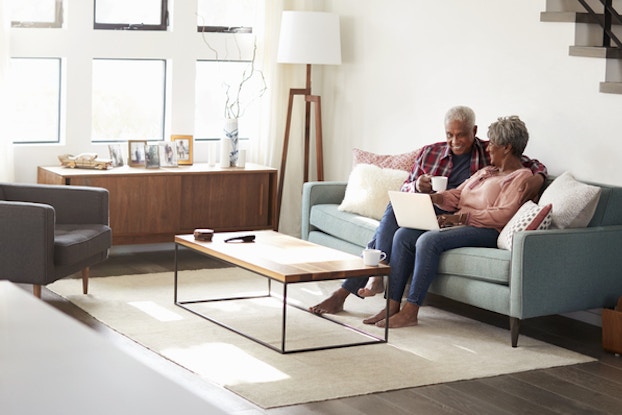
Best Buy looked at the demographic forecasts and saw an aging population seeking technology like in-home video chats with doctors and smart-home capabilities that help seniors live safely.
So the nation’s largest electronics chain decided to bet big on the 65-plus market, and a growing number of U.S. companies are expected to follow its lead.
“People are living longer, and the boomers are going to create a bulge in ages that will be startling for the retailers and consumer-oriented companies of America,” Laurie Orlov, principal analyst for Aging in Place Technology Watch, told CO—.
Best Buy last year spent $800 million to acquire Great Call, maker of the senior-friendly Jitterbug phones, and an operator of call centers that provide emergency alert services. In 2017, it introduced Assured Living, a service that lets adult children remotely monitor the safety and health of their parents. In May 2019, the retailer expanded its Great Call emergency monitoring and call center capabilities by acquiring another monitoring company, Critical Signal Technologies.
“There are 50 million people over 65 and that number is going to grow more than 50% in the next 20 years. So you have a real population of people who would like to have some help,” said Corrie Barry, Best Buy’s new CEO, in discussing the senior strategy during the company’s May 2019 earnings conference call.
Companies from Apple to Lyft target tech-savvy seniors
Other corporate powerhouses are going after the senior market as well.
Apple has added a fall detection and emergency alert feature to its smartwatches that can be activated by users over 65.
Amazon in 2018 bought video doorbell maker Ring as an entry point into the home security and home monitoring market. It reportedly has also been taking initiatives like talking to AARP about the senior market, and exploring ways to make devices like Alexa more senior friendly, or be used to track medications and provide check-in services.
Meanwhile, ride-sharing services Lyft and Uber have partnered with hospitals and medical practices to provide transportation for seniors.
There’s a misconception that the senior audience is not technologically savvy and not using technology. That is absolutely a myth.Adam Karp, CEO and co-founder, Lively
The senior population is growing, staying active longer, becoming increasingly tech savvy and willing to spend money to stay in their homes as they age.
By 2030, one in five U.S. residents will be 65 or older, according to the Census Bureau. By 2035, for the first time ever, there will be more Americans over 65 (78 million) than children under 18 (76.7 million).
The annual economic impact of adults over 50 exceeds $7 trillion, and that market clout is expected to grow to more than $13.5 trillion by 2032, according to a study prepared for AARP by Oxford Economics.
“There’s a misconception that the senior audience is not technologically savvy and not using technology. That is absolutely a myth,” said Adam Karp, CEO and co-founder of Lively, a company that lets people buy hearing aids, test their hearing and have video chats with audiologists, all online via smartphone, laptop or desktop computer.
Lively’s senior customers like being able to talk to an audiologist without leaving home, Karp said. “They’re embracing technology rapidly for the same reason everybody embraces technology,” he said. “It provides convenience, ease of use and connectivity.”
Lively, which launched in January 2019, raised $16 million in venture capital in its first round of financing. Raising money for senior-focused tech startups can be tough because it is an unfamiliar category for investors, Karp said. “Targeting the, quote, silver-haired audience is relatively new, and with that comes a learning curve for the venture community,” he said.
One problem companies have in targeting the senior market, Orlov said, is that with Americans living longer, the over-65 category spans 30 years or more. Lumping people from ages 65 to over 95 in one market category is like putting ages one to 35 into a single group and expecting everyone in it to have the same needs, Orlov said. “No one would ever consider doing that,” she said.
CO— aims to bring you inspiration from leading respected experts. However, before making any business decision, you should consult a professional who can advise you based on your individual situation.
CO—is committed to helping you start, run and grow your small business. Learn more about the benefits of small business membership in the U.S. Chamber of Commerce, here.






